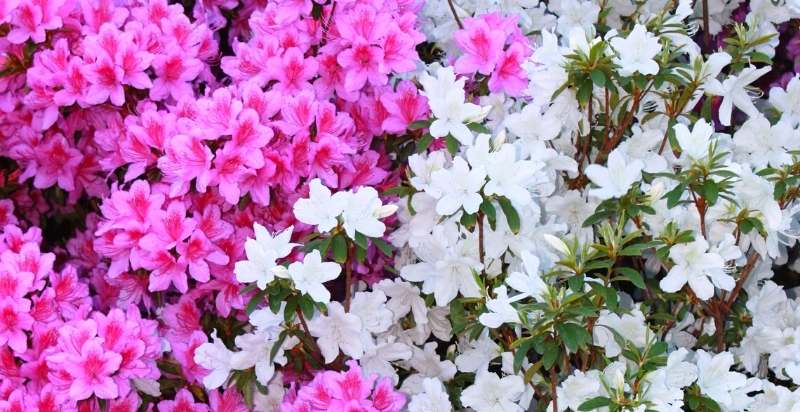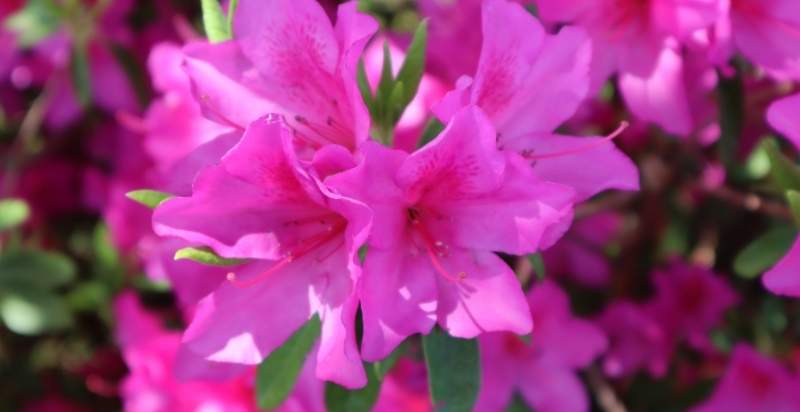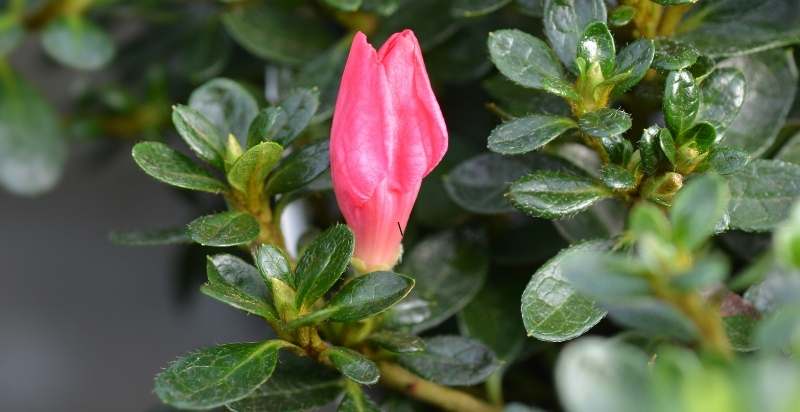Azaleas are a prevalent type of shrub, and Japanese azaleas (Rhododendron Obtusum) are some of the most beautiful. They’re perfect for adding a splash of color to your garden and are relatively easy to care for.
This article will tell you everything you need to know about Japanese Azaleas, including how to plant and care for them and tips on getting the most out of your plants.
What Is Japanese Azalea?
Japanese azalea (Rhododendron Obtusum) is a species of flowering plant in the heath family Ericaceae, native to Japan. It is an evergreen shrub growing to 1–2 m (3 ft 3 in–6 ft 7 in) tall and wide, with leathery leaves and clusters of pink flowers in late spring. Japanese azalea is a five petaled flower.
Japanese azalea is a popular ornamental plant grown for its showy flowers. It has been introduced to many other countries and regions outside its native range, including North America, Europe, Australia, and New Zealand.
| Category: | Nursery |
| Botanical Name: | Rhododendron Obtusum |
| Genus: | Rhododendron |
| Family: | Ericaceae |
| Type: | Flowering Shrub |
| Native: | North America, Europe, Australia, and New Zealand |
| Available Colors: | Flowers in shades of white, purple, pink, orange, and red |
| Bloom Time: | Late Spring |
| Height Range: | 4-7′ (1.2-2.1m) |
| Space Range: | 6-8′ (1.8-2.4m) |
| Lowest Temperature: | -20° to -10°F (-29° to -23°C) |
| Plant Light: | Sun to Part Shade |
| Companion Plants: | Hosta, Narcissus, Holly |
| USDA Zone: | 5-9 |
History And Origins Of Japanese Azalea:
The History and origins of Japanese azalea are unclear. It is possible that the plant was introduced to Japan from China during the Jomon period (c. 14,000-300 BCE), but it is just as likely that it was already present in the islands.
The first recorded instance of the azalea in Japan appears in the Nihon Shoki (Chronicles of Japan), written in 720 CE. In this work, the plant is listed as one of the offerings made by Emperor Suiko to the goddess Amaterasu.
Azaleas became popular in Japan during the Edo period (1603-1868). The plants were grown in gardens and parks, and their flowers were used as decorations for temples and shrines.
In the early 1800s, Japanese breeders began developing new varieties of azalea, and by the end of the century, there were hundreds of different types of azalea in Japan. Today, azaleas are still popular in Japan and are also widely grown in other parts of Asia and the West.

Taxonomy And Etymology Of Japanese Azalea:
Japanese azalea was first described and named by Carl Peter Thunberg in 1784. The specific epithet Obtusum means “blunt” or “obtuse,” referring to the shape of the leaves.
It is sometimes placed in a separate genus, Pentanthera, but more often included within Rhododendron as Rhododendron Obtusum. R. Obtusum is most closely related to Rhododendron Metternichii, and like that, the species has occasionally been treated as a member of the separate genus Pentanthera.
Japanese Azalea Description:
Japanese azalea is an evergreen shrub growing to 1–2 m (3 ft 3 in–6 ft 7 in) tall and wide. The leaves are oblong to oval-shaped, 3–7 cm (1 1⁄4–2 3⁄4 in) long, and 1.5–3 cm (5⁄8–1 1⁄8 in) broad, with a blunt or rounded apex and an entire margin.
The flowers are borne in clusters of 5–12 together, each flower tubular- funnel-shaped, 3–4 cm (1 1⁄4–1 1⁄2 in) long, with five lobes at the apex; they are pink with a darker blotch at the base of the upper lobe. Flowering occurs in late spring to early summer.
The fruit is a leathery, oval-shaped capsule 5–7 cm (2–2 3⁄4 in) long, containing numerous small seeds.

Japanese Azalea Distribution And Habitat:
Japanese azalea is native to Japan and occurs in the understory of forests on mountain slopes. It has been introduced to many other countries and regions outside its native range, including North America, Europe, Australia, and New Zealand.
In North America, it is found in the eastern United States from Maine south to Georgia and west to Michigan and Tennessee. In Canada, it is found in southern Ontario and Quebec.
Japanese Azalea Ecology:
Japanese azalea is shade tolerant and often found growing beneath deciduous trees. Bees and other insects pollinate it.
Japanese Azalea Uses:
Azaleas are popular garden shrubs in many parts of the world, and the Japanese azalea is no exception. These lovely plants can add a splash of color to any garden and are relatively easy to care for. In addition to their beauty, Japanese azaleas have several other uses.
Japanese azaleas can be used as hedges or privacy screens. They can also be planted in groups to create a colorful border. Azaleas can even be trained to grow into tree-like shapes.
In addition to their aesthetic value, Japanese azaleas have some practical uses. The oil from their leaves can be used as a natural insecticide. And the roots of these plants are known to have medicinal properties.
So, as you can see, Japanese azaleas have many uses. Whether you’re looking to add some beauty to your garden or you need a natural insecticide, these plants can be a great addition to your home.
Japanese Azalea Planting And Care:
Japanese azaleas can be planted in either spring or autumn. If you’re planting them in spring, make sure to do so before the end of May. If you’re planting them in autumn, plant them between September and November. Azaleas prefer well-drained soil that is rich in organic matter, and they also prefer a site that is sheltered from strong winds.
When you plant your azalea, dig a hole twice as wide as the plant’s root ball. Mix some compost or well-rotted manure into the soil you’ve removed from the hole. It will help to improve drainage and add some nutrients to the soil. Carefully remove the plant from its pot and place it in the hole. Backfill the hole with soil, taking care not to compress it too much. Water your azalea well after planting.
Azaleas don’t require a lot of fertilizer, but they will benefit from light feeding in spring. Use a fertilizer that is high in nitrogen and low in phosphorus, such as a Miracle-Gro Azalea, Camellia & Rhododendron Food. Apply the fertilizer according to the manufacturer’s instructions, then water it well.

Japanese Azalea Pruning:
Before they grow, Japanese Azaleas can be pruned in late winter or early spring. Pruning will help to encourage new growth and keep your plant healthy. To prune your azalea:
- Start by removing any dead, diseased, or damaged branches.
- Cut back any branches crossing or rubbing against each other.
- Cut back any branches that are longer than the others.
When you’re finished pruning, give your plant a light feeding of fertilizer and water it well.
Insects And Diseases
Japanese azaleas are relatively resistant to pests and diseases, but there are a few that you should be aware of. Azaleas are susceptible to root rot, so ensure their roots are not sitting in water. They can also be affected by aphids, scale insects, and caterpillars. These pests can be controlled with insecticidal soap or horticultural oil.
Japanese azaleas are also susceptible to powdery mildew, a fungal disease that causes a white or gray powder to form on the leaves. Powdery mildew can be controlled with a fungicide such as Serenade Garden Disease Control.
Japanese Azalea Harvesting And Storing:
Japanese azaleas can be harvested from late spring to early summer. Cut the stems below a set of leaves, and then remove the leaves from the bottom half of the stem. Japanese azaleas can be stored in a vase of water for up to two weeks.
Tips For Success:
Here are a few tips to help you get the most out of your Japanese azaleas:
– Plant them in a sheltered spot out of strong winds.
– Give them a light feeding of fertilizer in spring.
– Prune them in late winter or early spring.
– Keep an eye out for pests and diseases, and treat them promptly if you see any signs.
– Harvest the flowers in late spring or early summer.
– Store the flowers in a vase of water for up to two weeks.
Conclusion
Japanese azaleas are beautiful and versatile plants that can be used in many ways. They’re easy to care for, and with a bit of attention, they will thrive in your garden for many years. So if you’re looking for a beautiful and functional plant, Japanese azaleas are a great choice.
- Everything You Wanted to Know About Red Tamarillos - June 2, 2025
- A Guide to Tulips: Everything You Need to Know & More… - June 2, 2025
- Guanabana: Description, Flavor, Benefits, And Uses - May 27, 2025
